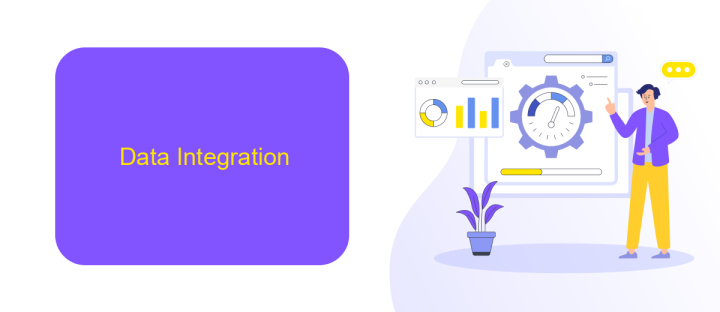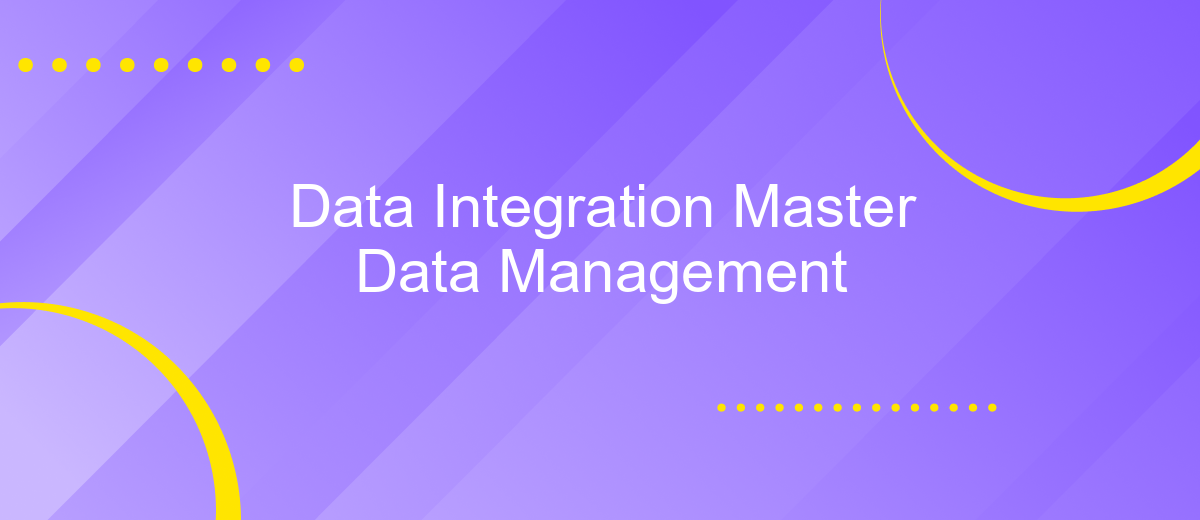Data Integration Master Data Management
In today's data-driven world, effective data integration and master data management (MDM) are crucial for businesses to maintain a competitive edge. By seamlessly combining data from diverse sources and ensuring its consistency and accuracy, organizations can unlock valuable insights, streamline operations, and enhance decision-making processes. This article explores the fundamentals of data integration and MDM, highlighting their significance and best practices.
Introduction
In today's data-driven world, the ability to efficiently manage and integrate data from various sources is crucial for organizations. Data Integration and Master Data Management (MDM) are essential processes that ensure consistency, accuracy, and reliability of data across the enterprise. These processes enable businesses to make informed decisions, improve operational efficiency, and enhance customer experiences.
- Data Integration: Combining data from different sources into a unified view.
- Master Data Management: Ensuring the consistency and accuracy of key business data.
- Improved Decision-Making: Providing reliable data for strategic decisions.
- Operational Efficiency: Streamlining business processes through accurate data.
- Enhanced Customer Experience: Delivering personalized and consistent interactions.
By leveraging Data Integration and Master Data Management, organizations can overcome data silos, reduce redundancy, and ensure that critical data is accurate and accessible. This not only supports better decision-making but also drives innovation and competitiveness in the market. As data continues to grow in volume and complexity, the importance of these processes will only increase, making them indispensable tools for modern enterprises.
Data Integration

Data integration is a critical process in modern enterprises, enabling the seamless flow of information across various systems and applications. By consolidating data from disparate sources, organizations can achieve a unified view, which is essential for accurate decision-making and operational efficiency. This process involves the use of various tools and technologies to extract, transform, and load (ETL) data, ensuring it is consistent, reliable, and ready for analysis. Effective data integration mitigates the risks of data silos and enhances the overall data quality within the organization.
One of the services that facilitate data integration is ApiX-Drive. This platform offers a user-friendly interface to connect different applications and automate data workflows without requiring extensive coding knowledge. ApiX-Drive supports a wide range of integrations, allowing businesses to streamline their operations by ensuring that data flows seamlessly between CRM systems, marketing platforms, and other essential tools. By leveraging such services, organizations can save time, reduce errors, and focus on leveraging their data for strategic initiatives.
Master Data Management

Master Data Management (MDM) is a crucial aspect of data integration that ensures the consistency and accuracy of an organization's critical data. By centralizing key information, MDM helps in reducing data redundancy and improving data quality. This centralized approach allows organizations to make more informed decisions, streamline operations, and enhance customer experiences.
- Identify critical data entities that need management.
- Establish data governance policies and standards.
- Implement data integration tools and technologies.
- Regularly monitor and update master data.
- Ensure compliance with regulatory requirements.
Effective MDM practices lead to a single, reliable source of truth for essential data entities such as customers, products, and suppliers. This not only supports better decision-making but also fosters operational efficiency and compliance. By investing in robust MDM solutions, organizations can unlock the full potential of their data assets, driving growth and innovation.
Integration of Data Integration and Master Data Management

The integration of Data Integration (DI) and Master Data Management (MDM) is crucial for achieving a unified and consistent data environment. DI focuses on combining data from different sources to provide a comprehensive view, while MDM ensures that this data is accurate, consistent, and reliable across the organization.
Integrating DI and MDM helps organizations to streamline their data processes, reduce redundancy, and enhance data quality. This integration allows for better decision-making and more efficient operations by ensuring that all data is both accessible and trustworthy.
- Improved data quality and consistency
- Enhanced data governance and compliance
- Streamlined data processes and reduced redundancy
- Better decision-making capabilities
By combining the strengths of DI and MDM, organizations can create a robust data management framework. This synergy not only supports operational efficiency but also drives strategic initiatives by providing reliable and comprehensive data insights.
- Automate the work of an online store or landing
- Empower through integration
- Don't spend money on programmers and integrators
- Save time by automating routine tasks
Benefits and Challenges
Implementing Data Integration and Master Data Management (MDM) offers numerous benefits, such as improved data accuracy, consistency, and accessibility. By consolidating data from various sources, organizations can achieve a single source of truth, which enhances decision-making and operational efficiency. Additionally, MDM helps in reducing data redundancy and ensures compliance with data governance policies. Tools like ApiX-Drive can streamline the integration process, allowing businesses to connect multiple data sources effortlessly and maintain real-time data synchronization.
However, these processes also come with challenges. Integrating data from disparate systems can be complex and time-consuming, requiring significant technical expertise and resources. Ensuring data quality and consistency across different platforms is another major hurdle. Moreover, organizations must address data privacy and security concerns, especially when dealing with sensitive information. Despite these challenges, leveraging services like ApiX-Drive can mitigate some of these issues by providing robust integration capabilities and simplifying the management of data flows.
FAQ
What is Data Integration in the context of Master Data Management (MDM)?
Why is Master Data Management important for businesses?
How can businesses automate data integration processes?
What are the common challenges in implementing MDM?
How does Data Integration improve data quality in MDM?
Strive to take your business to the next level, achieve your goals faster and more efficiently? Apix-Drive is your reliable assistant for these tasks. An online service and application connector will help you automate key business processes and get rid of the routine. You and your employees will free up time for important core tasks. Try Apix-Drive features for free to see the effectiveness of the online connector for yourself.


